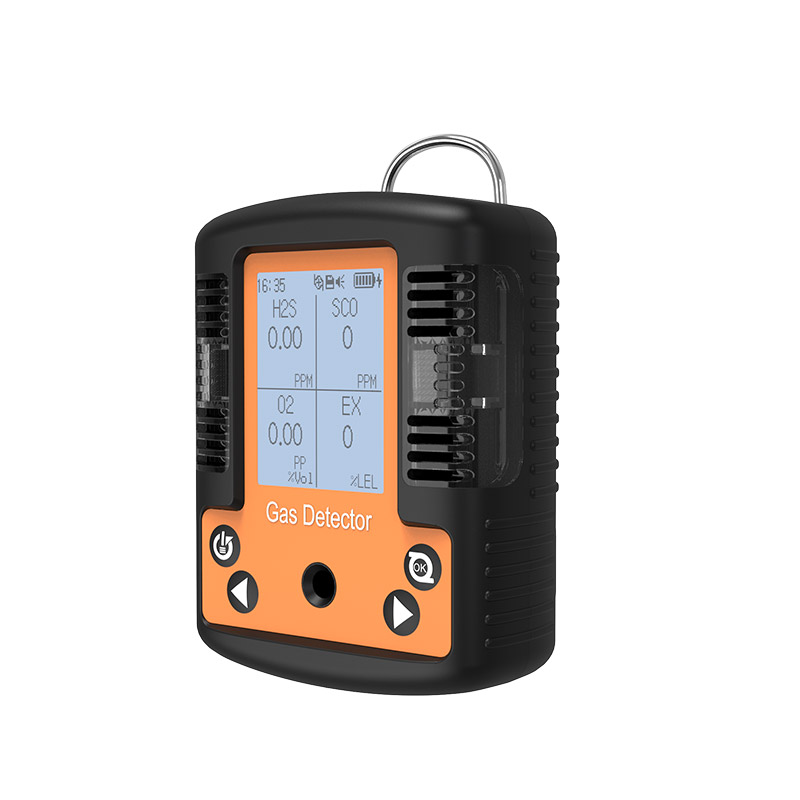- English
- Español
- Português
- русский
- Français
- 日本語
- Deutsch
- tiếng Việt
- Italiano
- Nederlands
- ภาษาไทย
- Polski
- 한국어
- Svenska
- magyar
- Malay
- বাংলা ভাষার
- Dansk
- Suomi
- हिन्दी
- Pilipino
- Türkçe
- Gaeilge
- العربية
- Indonesia
- Norsk
- تمل
- český
- ελληνικά
- український
- Javanese
- فارسی
- தமிழ்
- తెలుగు
- नेपाली
- Burmese
- български
- ລາວ
- Latine
- Қазақша
- Euskal
- Azərbaycan
- Slovenský jazyk
- Македонски
- Lietuvos
- Eesti Keel
- Română
- Slovenski
- मराठी
- Srpski језик
The Explosion-Proof Four-in-One Gas Detector Is Indicating Sensor Failure. What Should I Do?
2025-11-07
If an explosion-proof four-in-one gas detector displays a sensor failure message, it means that one or more gas sensors are not functioning properly. This directly affects the accuracy of the detection results and may even render the device ineffective in providing safety warnings. Therefore, when handling this issue, prioritize environmental safety, identify the problem, and then seek professional repair. Avoid improper operation that could damage the explosion-proof performance or overlook potential risks. Below is a sharing from Zetron Technology; let's take a look.

I. Stop Equipment First, Ensure Environmental Safety
Immediately stop using the faulty explosion-proof four-in-one gas detector; do not rely on it to measure gases. In high-risk environments such as confined spaces or chemical workshops, evacuate to a safe area first, or use a backup, functioning detector to confirm that gas levels are within acceptable limits before addressing the faulty equipment to avoid missed detections and potential accidents.
Furthermore, never attempt to disassemble the equipment casing yourself. The casing and interfaces of the explosion-proof four-in-one gas detector are designed according to explosion-proof standards. Unauthorized disassembly will damage the explosion-proof structure and may allow dust and moisture to enter, exacerbating the damage.
II. Simple Troubleshooting for Common Problems
In a safe environment, first perform simple checks to rule out issues beyond the sensor itself being damaged:
1. Check the power supply and restart: Check if the battery has sufficient charge. For portable devices, use replaceable or rechargeable batteries; for stationary devices, check the power supply line. After fully charging, restart and wait 3-5 minutes for the sensor to warm up. Sometimes, unstable power supply causes sleep mode, which can be resolved by restarting.
2. Check for moisture or contamination: If used in a high-humidity, dusty environment, inspect the dust filter at the air inlet. If dust is present, gently clean it with a soft brush, being careful not to touch the internal sensor. In high humidity, place the device in a cool, ventilated place to air dry for 1-2 hours, then try restarting.
3. Confirm regular calibration: The sensor in a four-in-one gas detector needs to be calibrated every 6-12 months. Exceeding this period may cause accuracy drift and report failure. Check the calibration record in the device menu. If it's expired, contact a professional organization for calibration; calibration usually restores accuracy.
III. Seek Professional Inspection and Repair
If the device still shows as malfunctioning after troubleshooting, it's highly likely the sensor is faulty, such as due to aging or being burned by corrosive gases. Contact the manufacturer or a qualified repair shop. Do not attempt to replace the sensor yourself; the four-in-one sensor needs to be compatible with the motherboard, and calibration is required after replacement. Non-professional operation can lead to inaccurate detection.
When contacting repair services, clearly state the brand and model of the four-in-one gas detector, which sensor is malfunctioning (usually combustible gas, carbon monoxide, hydrogen sulfide, or oxygen), the screen markings, whether it has been exposed to corrosive gases, and the duration of use. This will help the repair personnel determine the cause and obtain spare parts.
Most sensors can be replaced individually at a low cost. A few integrated with the motherboard require replacement of the detection module. Repair shops will measure the sensor's response value and zero-point drift to determine if replacement is possible and whether explosion-proof certification needs to be re-certified. Some devices require certification after replacing core components.
IV. Daily Prevention and Fault Reduction
Regularly calibrate according to the instruction manual and do not use beyond the expiration date; do not use in environments with high concentrations of corrosive gases for extended periods, and remove the device if the concentration exceeds the limit; store portable devices in a dry storage box and do not mix them with oil or chemicals; keep stationary devices away from rain and dust, and clean the dust filter at the air inlet regularly.
Summary
If your explosion-proof four-in-one gas detector indicates sensor failure, don't panic. Prioritize safety, perform a simple troubleshooting step, and then seek professional assistance. The key is to avoid disassembling or replacing parts yourself. Ensure accurate detection after repair while maintaining explosion-proof performance. This device is for safety warnings, and safe operation must be the primary consideration.







